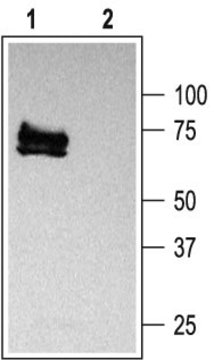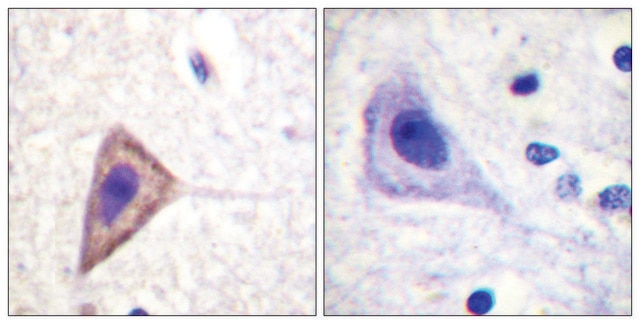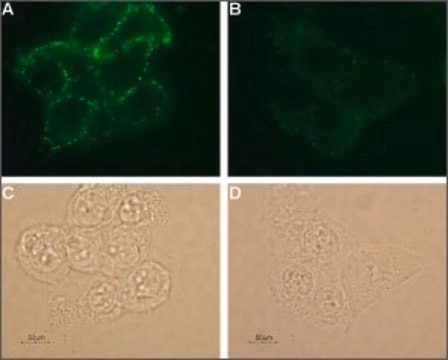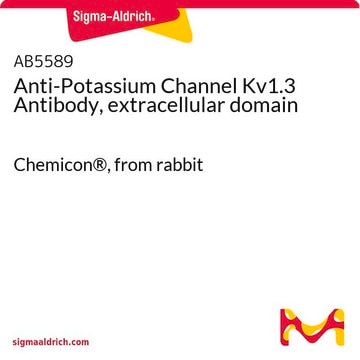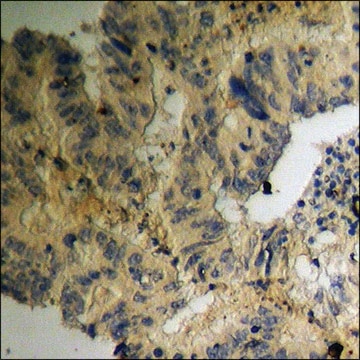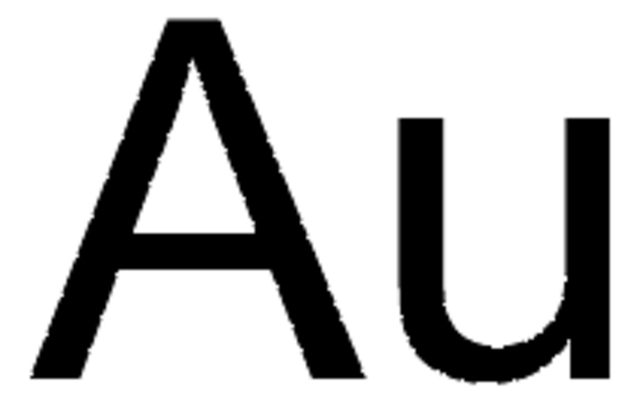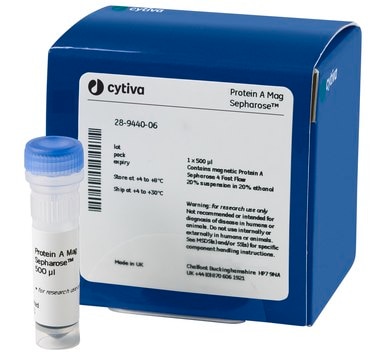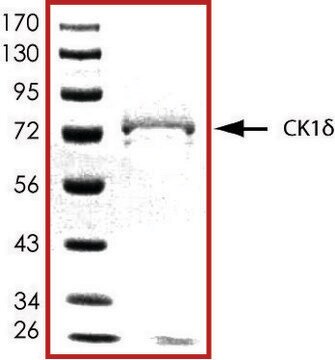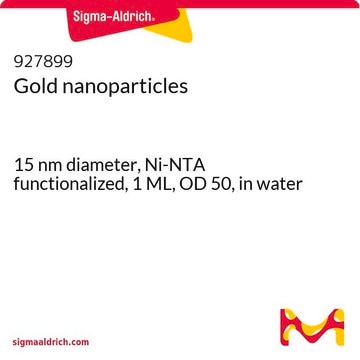AB5178
Anti-Potassium Channel Kv1.3 Antibody
Chemicon®, from rabbit
Sign Into View Organizational & Contract Pricing
All Photos(1)
About This Item
UNSPSC Code:
12352203
eCl@ss:
32160702
NACRES:
NA.41
Recommended Products
biological source
rabbit
Quality Level
antibody form
affinity purified immunoglobulin
antibody product type
primary antibodies
clone
polyclonal
species reactivity
rat, mouse, human
manufacturer/tradename
Chemicon®
technique(s)
immunohistochemistry: suitable
western blot: suitable
NCBI accession no.
UniProt accession no.
shipped in
wet ice
target post-translational modification
unmodified
Gene Information
human ... KCNA3(3738)
General description
Anti-Potassium Channel Kv1.3 Antibody detects level of Potassium Channel Kv1.3 & has been published & validated for use in IH & WB.
Specificity
Recognizes a full length Kv1.3 protein. Possibly cross reacts with Kv1.1.
Immunogen
GST fusion protein and a C-terminal portion of human Kv1.3 protein (amino acids 471-523) (Accession P22001).
Application
Detect Potassium Channel Kv1.3 using this Anti-Potassium Channel Kv1.3 Antibody validated for use in IH & WB.
Research Category
Neuroscience
Neuroscience
Research Sub Category
Ion Channels & Transporters
Ion Channels & Transporters
Western blot: 1:200 using ECL on rat brain membranes.
Immunohistochemistry on rat brain sections.
Dilutions should be made using a carrier protein such as BSA (1-3%)
Optimal working dilutions must be determined by the end user.
Immunohistochemistry on rat brain sections.
Dilutions should be made using a carrier protein such as BSA (1-3%)
Optimal working dilutions must be determined by the end user.
Linkage
Replaces: AB9784
Physical form
Affinity purified immunoglobulin. Lyophilized from phosphate buffered saline, pH 7.4, containing 1% BSA, 5% sucrose as a stabilizer and 0.025% sodium azide as a preservative. Reconstitute with 200 mL of sterile deionized water. Centrifuge antibody preparation before use (10,000 xg for 5 min).
Format: Purified
Storage and Stability
Maintain lyophilized material at -20°C for up to 12 months. After reconstitution maintain at -20°C in undiluted aliquots for up to 6 months. Avoid repeated freeze/thaw cycles.
Analysis Note
Control
CONTROL ANTIGEN: Included free of charge with the antibody is 120 μg of control antigen (lyophilized powder in phosphate buffered saline, pH 7.4, containing 5% sucrose and 0.025% sodium azide). The stock solution of the antigen can be made up using 100 μL of sterile deionized water. For positive control, in Western blot using 20 ng of protein per lane (minigel). For negative control, preincubate 3-5 μg of fusion protein with 1 μg of antibody for one hour at room temperature. Optimal concentrations must be determined by the end user.
CONTROL ANTIGEN: Included free of charge with the antibody is 120 μg of control antigen (lyophilized powder in phosphate buffered saline, pH 7.4, containing 5% sucrose and 0.025% sodium azide). The stock solution of the antigen can be made up using 100 μL of sterile deionized water. For positive control, in Western blot using 20 ng of protein per lane (minigel). For negative control, preincubate 3-5 μg of fusion protein with 1 μg of antibody for one hour at room temperature. Optimal concentrations must be determined by the end user.
Other Notes
Concentration: Please refer to the Certificate of Analysis for the lot-specific concentration.
Legal Information
CHEMICON is a registered trademark of Merck KGaA, Darmstadt, Germany
Disclaimer
Unless otherwise stated in our catalog or other company documentation accompanying the product(s), our products are intended for research use only and are not to be used for any other purpose, which includes but is not limited to, unauthorized commercial uses, in vitro diagnostic uses, ex vivo or in vivo therapeutic uses or any type of consumption or application to humans or animals.
Not finding the right product?
Try our Product Selector Tool.
Storage Class
11 - Combustible Solids
wgk_germany
WGK 3
Certificates of Analysis (COA)
Search for Certificates of Analysis (COA) by entering the products Lot/Batch Number. Lot and Batch Numbers can be found on a product’s label following the words ‘Lot’ or ‘Batch’.
Already Own This Product?
Find documentation for the products that you have recently purchased in the Document Library.
Deletion of voltage-gated channel affects glomerular refinement and odorant receptor expression in the mouse olfactory system.
K C Biju,David Ronald Marks,Thomas Gerald Mast,Debra Ann Fadool
The Journal of Comparative Neurology null
Our team of scientists has experience in all areas of research including Life Science, Material Science, Chemical Synthesis, Chromatography, Analytical and many others.
Contact Technical Service